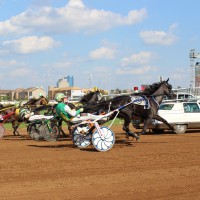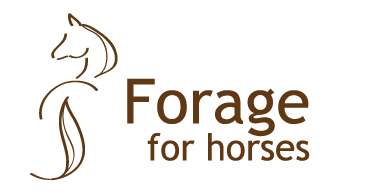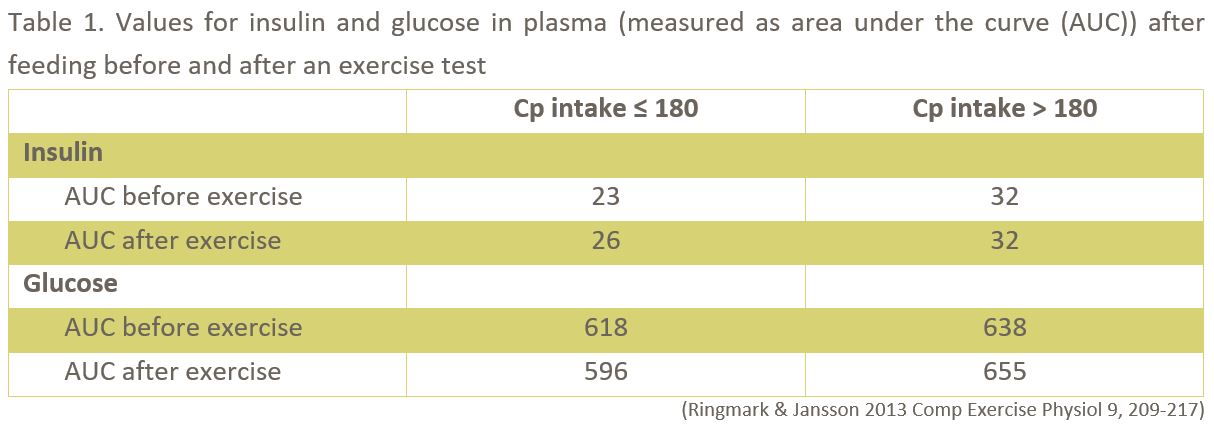Forage crude protein concentration affects horses’ insulin response

Early harvested forage has high energy content but also often high crude protein content and it seems that the amount of crude protein (cp) in forage can affect horses’ insulin response after feeding. In this study 5 Standardbred trotters in training were fed forage with differing concentrations of sugar (30-120 g/kg dry matter (DM)) and protein (63-107 g digestible cp/kg DM). The feeding regimes resulted in one high daily cp intake of > 180 g cp/100 kg bodyweight (BW) (180 g cp = 138 g digestible cp) and one lower daily cp intake of ≤ 180 g cp/100 kg BW but could also be separated into high and low sugar intake (> or ≤ 100 g/100 kg BW). The forages had sufficiently high energy values; 6.4-9.5 kg DM forage per day ensured daily energy intakes of 19 MJ metabolizable energy/100 kg BW and no concentrate was needed. The forages were complemented with minerals. All horses were tested on all forages and performed exercise tests on a track, blood samples were taken before and after feeding both at rest and after the exercise tests.
The high crude protein intake resulted in higher insulin release after feeding but the exercise did not affect the insulin response (Table 1). The cp intake did not affect the plasma glucose concentration (Table 1). That sugar intake affects the insulin response is well known, and also that intake of sugar and protein at the same time can give a greater insulin release than sugar intake alone. This study gave similar results; sugar and protein intake together explained more of the variation in insulin response compared to the sugar intake alone.
This means that forage with high cp content is interesting for the high performing athlete since insulin stimulates muscle glycogen storage and high insulin release after feeding can benefit muscle recovery after exercise. Early harvested forage have high energy and protein values and is therefore suitable for high performing horses. Read more about protein intake and muscle recovery here.
For insulin-resistant horses an increased insulin release can instead be a problem as high insulin levels can cause laminitis. Excess feeding of protein and energy should be avoided to obese, insulin-resistant horses and later harvested forage is therefore more suitable for these horses. But it is still important to not fall below the horses’ calculated protein requirements, forage for insulin-resistant horses should contain 5-6 g digestible cp/MJ metabolizable energy. Also for horses with muscle diseases such as rhabdomyolysis and PSSM forage high in cp could be problematic as these horses instead require a diet that does not stimulate but rather restrict muscle glycogen storage.
Sara Muhonen, AgrD

